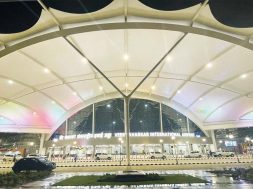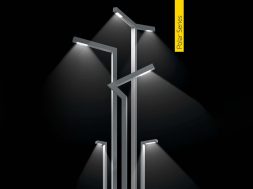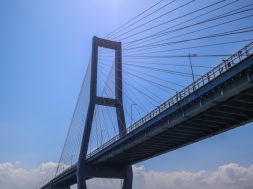Designing tensile structures for airports

As the aviation industry demands ever-higher standards of efficiency and sustainability, tensile structures have emerged as a leading solution. Mehler Texnologies is at the forefront, providing high-performance materials that meet the rigorous demands of modern airports.
Innovative design: Tensile structures for modern airports
In the ever-evolving world of architecture, tensile structures have emerged as a revolutionary solution for modern airports. These structures, characterised by their lightweight and flexible nature, offer a blend of functionality, aesthetics, and durability. Designing tensile structures for airports involves meticulous planning and consideration of various factors to ensure they meet the high standards required for such critical infrastructure. Mehler Texnologies is a prominent player in the field of technical textiles, offering a wide range of products that are ideal for tensile structures. Their products include high-performance fabrics such as the VALMEX product line. These materials are known for their exceptional durability, flexibility, and resistance to environmental factors.
Functional requirements and structural design
The primary goal in designing tensile structures for airports is to meet functional requirements while maintaining structural integrity. The supporting framework, which includes cables, masts, and columns, must be robust enough to withstand environmental factors such as wind loads, snow loads, and seismic activity. Structural analysis and wind load analysis are crucial steps in this process, ensuring that the design can handle the stresses imposed by natural forces.
Long-term durability and safety
Tensile structures are renowned for their durability and safety when designed and maintained correctly. High-quality materials, such as PVC-coated polyester fabrics, are commonly used due to their resistance to weathering, UV radiation, and other environmental factors. Regular maintenance, including inspections for tears, abrasions, or tension loss, is essential to ensure longevity. Proper cleaning and occasional re-tensioning of cables or fabrics help maintain structural integrity over time. When it comes to tensile structures materials such as VALMEX® MEHATOP stand out for their outstanding performance. Designed for demanding applications, this polyester PVC coated fabric offers a winning combination of features:
- Low-Wick Yarns: Prevent moisture absorption, enhances resistance to fungus, and contributes to overall durability.
- UV-Resistant: Boasts high UV resistance, ensuring longevity even under intense sunlight.
- Antimicrobial: Containing an antimicrobial additive to protect the product long term from microbial/fungal degradation.
- Advanced Lacquering System: Multi-composed PVDF-lacquer system on both sides, Titaniumdioxide (TiO2) front side primer.
Advancements in materials
Recent advancements in materials have significantly influenced the design and performance of tensile structures. Modern materials, including high-strength fabrics, composites, and coatings, offer increased strength-to-weight ratios, allowing for larger spans and lighter structures. These materials also provide better resistance to weathering, UV degradation, and fire, making tensile structures more suitable for diverse environmental conditions. Innovations in material technology have enabled more creative shapes and forms, leading to greater architectural freedom and aesthetic possibilities.
Minimising environmental impact
Tensile structures are not only functional and aesthetically pleasing but also environmentally friendly. They use materials that require less resource consumption compared to traditional building materials. Mehler Texnologies is offering a wide range of environmentally friendly material, such as VALMEX® TF 400 ECO, a cutting-edge mesh fabric designed for textile architecture. Made entirely from upcycled PET bottles, this fabric is ideal for façade design. It boasts properties similar to conventional mesh fabrics and has been honoured with the prestigious AMA Award for Sustainable Building.
The lightweight nature of these structures means less energy is needed for transportation and installation, reducing the overall carbon footprint. Additionally, many tensile structures use translucent materials that allow natural light to penetrate, reducing the need for artificial lighting and saving energy.
Adaptability to different climates
Tensile structures are versatile and can be adapted to various climates and weather conditions. In hot and dry climates, UV-resistant fabrics and proper ventilation are crucial to maintaining a cooler environment underneath. In cold and snowy climates, the design must account for snow loads and ensure materials retain flexibility at low temperatures. Humid and tropical climates require materials resistant to mould, mildew, and corrosion, while windy areas necessitate aerodynamic shapes and secure anchoring systems to withstand strong winds.
For more details , Visit : https://lowandbonarinvestors.freudenberg-pm.com/en
Cookie Consent
We use cookies to personalize your experience. By continuing to visit this website you agree to our Terms & Conditions, Privacy Policy and Cookie Policy.








